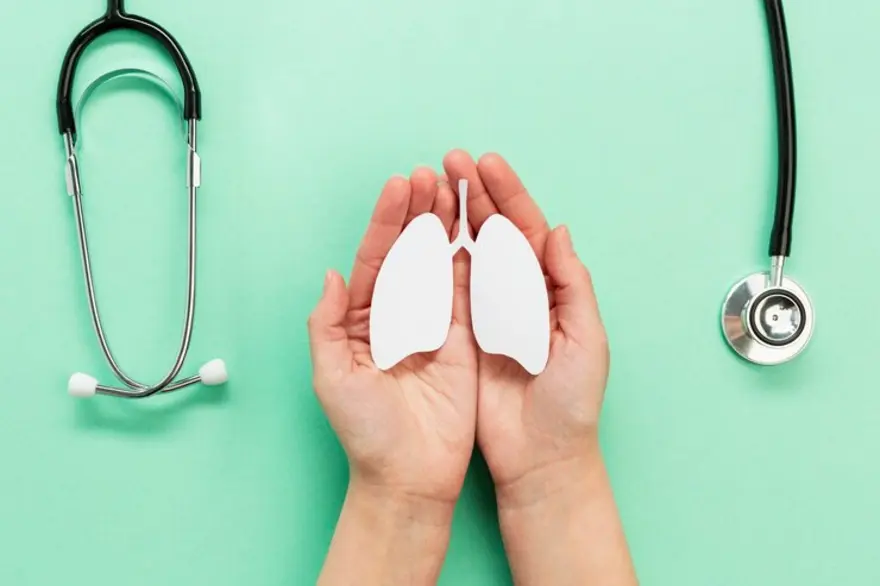Preventive Healthcare
Common Cold: Symptoms, Signs, Causes And Treatment
2269 Views
0

It's that time of year again—you're sick and you don't know what to do.
You've got a cold, but you just can't seem to shake it. You might be wondering: "What does this thing do?"
Well, it's not the end of the world! Here's how to treat your common cold and get back on your feet as soon as possible.
What is Common Cold?
Common cold, also known as rhinovirus, is a viral infection that causes fever, sore throat, runny nose, and cough. It's caused by viruses like rhinovirus, adenovirus, and coronavirus.
The illness usually lasts a few days and is generally mild, but it can be more severe in young children or people who are elderly or have asthma. Cold symptoms may begin as soon as two days after exposure to an infected individual or take up to three weeks to develop (although this varies).
Typically there are no long-term effects of infection with rhinoviruses; however, for some people, common colds may lead to bronchitis or pneumonia if the infection spreads from their upper airways into their lungs.
Causes of Common Cold
There are several causes of the common cold. The most common ones are:
- Viral infection
- Bacterial infection.
- Allergic reaction.
- Exposure to cold temperatures.
- Weakened immune system.
- Environmental irritants
- Touching objects or people that have the cold virus on them (such as door handles)
The common cold is usually spread by direct transmission. If you've been exposed to someone who has a cold before, this makes it more likely that you'll get sick too—and vice versa.
This can be especially problematic for children who spend time playing together in school playgrounds when there are other kids around who might be infected with their parents' illnesses!
Symptoms of Common Cold
The symptoms of the common cold are generally mild to moderate and include:
Other symptoms include fever or chills along with nausea and vomiting.
You may also experience diarrhea or constipation as well as stomach pain which can be very unpleasant at times.
If the symptoms persist for more than 10 days, seek medical attention immediately.
Treatment Of Common Cold
There are several ways in which you can treat the common cold:
- Drink hot tea: Stay hydrated by drinking water or herbal teas like peppermint tea or rosehip tea. Adding honey or lemon to your tea will help soothe your throat, making it more comfortable for you to swallow. This is a great way to get rid of any lingering coughs or sore throats in your body quickly
- Eat something high in vitamin C like citrus fruits every day, especially when you wake up in the morning and before bedtime at night. You might also want to consider taking vitamin C supplements. This will help boost your immune system and encourage it to fight off germs more effectively.
- Take plenty of rest: Taking plenty of rest and drinking plenty of fluids are two of the best things you can do for yourself when you have a cold. Drinking warm liquids like soup or tea can also help soothe your throat and clear your congestion.
- Cool Mist Vaporizers: One way to clear nasal congestion and dryness is to use a cool mist vaporizer. Vaporized water can help moisten the airways and promote breathing. Additionally, the cool mist vaporizer can help to clear nasal congestion and dryness by stimulating the production of mucus. You can also use a saline nasal rinse to help with dryness and irritation if needed.
- Use a humidifier in the bedroom at night; this helps keep your skin moist by creating moisture around the nostrils through evaporation, also called “condensation” or “misting” on cold surfaces, such as bathroom mirrors or windowsills!
- You can also try taking an over-the-counter nasal decongestant. These will help your nose run less and make it easier to breathe through your mouth. Antihistamines and Lozenges can also be taken to combat your cold and cough.
- If this doesn't help with the discomfort, try taking a hot shower or bath so that steam clears out your sinuses and makes breathing easier. You can also use some essential oils such as eucalyptus oil.
The best way to treat the common cold is with plenty of fluids and rest. Wash your hands frequently with soap and water or use hand sanitizer. You can also drink plenty of water to stay hydrated. If you have a fever or feel very tired or lethargic during the day while you have a cold, go to bed earlier than usual so that you can rest more easily.
Conclusion
The common cold is a respiratory illness that affects millions of people every year. It is caused by the rhinovirus, a type of virus that is spread through saliva, mucus, and other secretions in the nose and throat. There are several different types of cold viruses and they can affect people of all ages.
The most common symptoms of the common cold include a sore throat, runny or stuffy nose, sneezing, headache, body aches, and chills.
Some people may have a fever and cough as well. If you have any of these symptoms it's important to see your doctor as soon as possible so that they can determine the best course of action for your treatment plan.
 Home Visit
Home Visit Upload
Upload














1701259759.webp)









 WhatsApp
WhatsApp